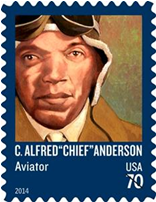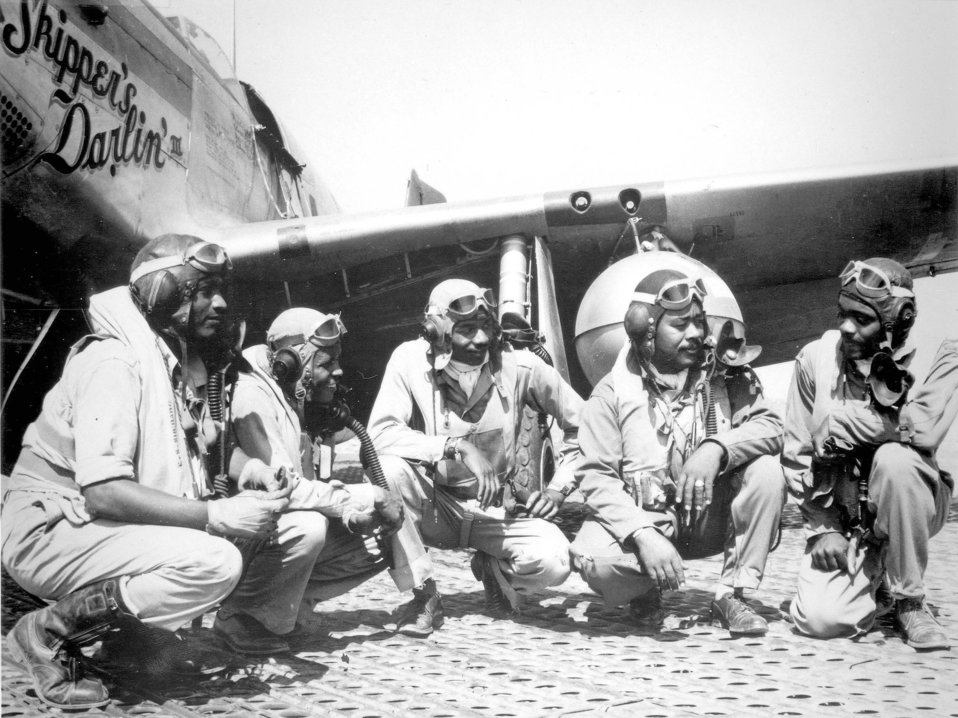Tuskegee Airmen
Rights and Responsibilities
National History Day 2025
Alfred “Chief” Anderson is one of the most famous of the pilots in the Tuskegee Airmen story. In 1929, Anderson had earned his pilot's license, and went on to become the first African American to earn a commercial pilot's certification in 1932. The successful Civilian Pilot Training program under Anderson's leadership was a major factor in the Army Air Corps decision to establish a primary training program in Tuskegee, Alabama. As chief flight instructor at Tuskegee, he supervised primary flight training for 1,000 African-American pilots.

C. Alfred "Chief" Anderson as featured on an United States Postal stamp, 2014

Photo of Cadets at the Tuskegee Institute, 1942 National Air and Space Museum.
During World War II, the Tuskegee Airmen played a significant role as African American pilots and support personnel, demonstrating exceptional skill and bravery in combat. In February 1942, the first class of cadets graduated from the Army Air Corps pilot training program at Tuskegee, earning their silver wings as the nation's first Black military pilots. These five notable airmen, including Second Lieutenants Lemuel R. Curtis, Charles DeBow, Mac Ross, George Spencer Roberts, and Captain Benjamin O. Davis, Jr., paved the way for hundreds of others to follow. Benjamin O. Davis, whos father helped convince president Franklin Roosevelt to allow for an all-black army unit, had became the commander of the 332nd Fighter Group in 1943. In addition to fighter pilots, Tuskegee also trained twin-engine pilots for the 477th Bombardment Group, which was activated in April 1944. This group flew the B-25 Mitchell bomber, a medium twin-engine bomber, but unfortunately couldn't be deployed overseas due to the end of the war against Japan. By the end of the war, 355 pilots who trained at Tuskegee served overseas with the fighter squadrons and groups.
The Tuskegee Airmen played a crucial role during World War II, demonstrating their exceptional skill and bravery in combat. They flew over 15,000 sorties, or flights out of defense within around 1,500 missions. Many of these missions were carried out via red-tailed P-51 Mustang planes, earning them the nickname "Red Tails". 27% of the 355 pilots who went overseas received the Distinguished Flying Cross, which is presented to those who express a distinct act of heroism or extraordinary achievement whilst in aerial flight. These men were instrumental in escorting bombers, achieving a stellar reputation for their effectiveness and low loss rates, with only 66 deaths as a result of combat. Their successful performance helped challenge racial stereotypes and contributed to the desegregation of the U.S. Armed Forces.

Pilots of the 332nd Fighter Group, U.S. Air Force